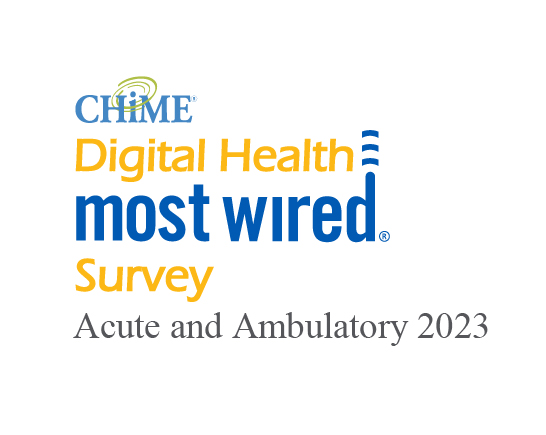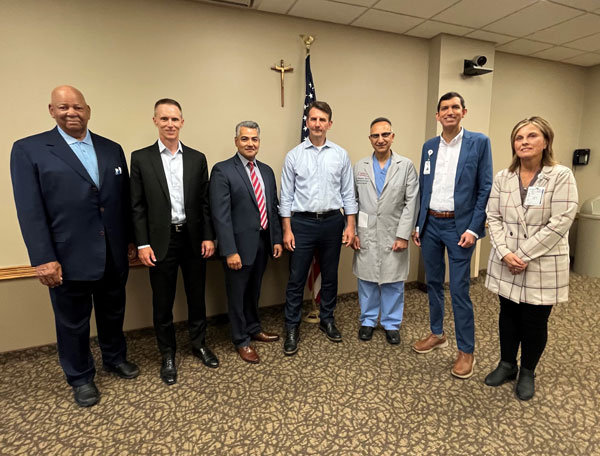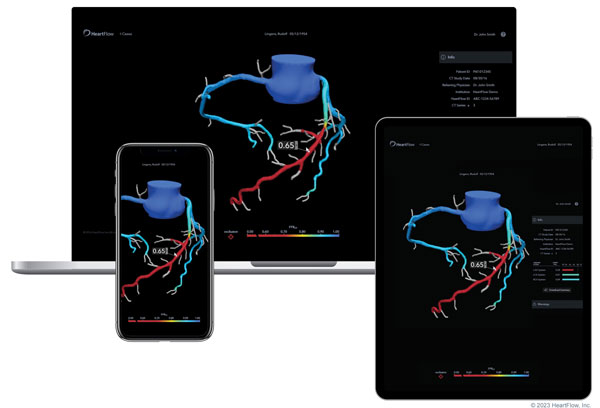
NWI woman energized after less-invasive heart valve replacement
For four years, Nancy Price walked around with a worry lingering in the back of her mind. One day, she would need heart surgery. When that day finally arrived, the procedure was over in less than 45 minutes.
“The worst part was the waiting and anticipation,” she says. “I did not want to have it done, but I had to have it done.”
On Aug. 18, 2021, heart specialists at Community Hospital in Munster performed a transcatheter aortic valve replacement (TAVR) on Price. More than 500 TAVR procedures have taken place at the hospital, including the first in Northwest Indiana in January 2017.
TAVR is less invasive than open-heart surgery and does not require patients to rely on a bypass machine to breathe. While the patient is sedated, a catheter is inserted in the groin area or chest and passed through an artery to the heart, delivering a new valve. The damaged valve remains in place and the new valve is positioned to take over the job of regulating blood flow.
Price, a 73-year-old retired nurse, is grateful for the less-invasive TAVR option. Hours after the procedure, she walked laps around the nurses’ station. She never needed a pain pill.
“I went to the hospital on a Wednesday morning,” Price says. “They did the TAVR and I went home Thursday morning at 11 a.m. When I was back home, I said, ‘I want to take a walk.’ With TAVR, I had no problems.”
Friends and family noticed an immediate difference.
“Everyone said my color looked better,” the Schererville resident recalls, but she was noticing a difference, too.
“Before, I would have to sit down halfway through making breakfast,” she says. “Now, I am not short of breath.”
She built strength and stamina through cardiac rehabilitation three times a week and continues to gain energy. Active at church, Price also enjoys reading, walking and traveling. Married 55 years to husband Tom Price, the couple has three children, seven grandchildren and six great-grandchildren, across the country.
Price’s path to TAVR started in 2017 when her general practitioner detected a heart murmur during a routine exam. It was surprising, as Price had no symptoms of cardiac distress. A follow-up echocardiogram revealed mild stenosis, which is narrowing of the heart’s aortic valve. The damage was not severe enough to warrant surgery, but doctors told Price she would need to fix the issue at some point.
Price continued with check-ups and echocardiograms, which allowed doctors to monitor the health of her valve over time. When Price’s feet and ankles began to swell (a sign doctors had told her to watch for), she went for another echocardiogram. Her Community Care Network cardiologist, A. Arif Khalil, MD, said it was time to replace her damaged heart valve.
When patients need this type of cardiac attention, members of the heart team at Community Hospital meet with the patient, discuss the options and determine the best care plan, case by case.
“Our primary goal is to give patients with valve disease an improved quality of life,” says Jessica Kiszka, nurse practitioner and valve coordinator, Community Healthcare System Structural Heart & Valve Center.
Community Hospital is the only hospital in Lake County that offers patients the advanced TAVR technique. The procedure, performed in a state-of-the-art hybrid operating room, is led by fellowship-trained interventional cardiologists and cardiothoracic surgeons on the Community Healthcare System Structural Heart and Valve team.
“We have built a reputation for prioritizing patient care and performing intricate, advanced procedures,” says Samer Abbas, MD, medical director of Cardiovascular Services and the Structural Heart & Valve Center of Community Healthcare System. “Our expertise with this groundbreaking procedure has led to outcomes far exceeding national benchmarks. More than 92 percent of our TAVR patients return home the following day.”
Kiszka says Lake County is her home, and she is proud Community Healthcare System offers great treatment. Aside from convenience, location helps with continuity of care.
“It is not just about the procedure,” she says. “It is about the pre-procedure testing and the follow-ups. If you come to the hospital for a different reason, we can offer that continuity of care and collaboration with your primary providers.”
Visit COMHS.org/heart for more information about Cardiovascular Services at Community Healthcare System.


